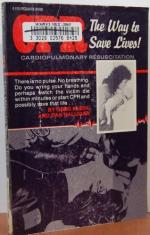|
This section contains 282 words (approx. 1 page at 300 words per page) |
Attempting to restart breathing and heartbeat for someone whose breathing and pulse appear to have stopped.
Cardiopulmonary resuscitation (CPR) employs chest compressions in a sequential pattern with artificial respiration to restore or maintain weak breathing and heartbeat. Both the U.S. Public Health Service and the American Academy of Pediatrics recommend that parents receive training in such first aid techniques from the American Red Cross, YMCA, or other community agency.
Carcinogens
The U.S. Department of Health and Human Services has determined that the following industrial processes, occupational exposures, and chemicals are associated with cancer in humans:
- 4-Aminobiphenyl
- Analgesic mixtures containing phenacetin (used as anti-fever agents)
- Arsenic and arsenic compounds
- Asbestos
- Auramine manufacture
- Benzene (used in nail polish remover, varnishes, airplane dopes, lacquers, and as a solvent)
- Benzidine
- N,N-Bis (2-Chloreothyl)-2-Naphthylamine (Chlomophaozine)
- BIS (chloromethyl) ether and technical grade chloromethyl methyl ether
- Boot and shoe manufacture and repair
- 1, 4-Butanediol dimethanesulphonate (Myleran)
- Certain combined chemotherapy for lymphomas (including MOPP)
- Chlorambucil
- Chromium and certain chromium compounds
- Coal gasification
- Coal tar and coal tar pitch
- Coke production
- Conjugated estrogens
- Cyclophosphamide
- Diethystilbestrol (DES)
- Furniture manufacture
- Isopropyl alcohol manufacture
- Malphalan
- Methoxsalen with ultra-violet A therapy
- Mineral oils
- Mustard gas
- 2-Naphthylamine
- Nickel refining
- Rubber industry (certain occupations)
- Soots, tars, and oils
- Tobacco
- Treosulphan
- Ultraviolet radiation
- Underground hematite mining (with exposure to radon)
- Vinyl chloride
Contact with these substances should be avoided by both children and adults.
For Further Study
Books
American National Red Cross. Respiratory and Circulatory Emergencies. Washington, DC: American National Red Cross, 1978.
Audiovisual Recordings
How to Save Your Child or Baby: When Every Second Counts. Los Angeles, CA: Video Prescriptions, 1987.
(One 40-minute videocassette.)
Seconds Count. Manhattan Beach, CA: Mann Design, 1991.
(One 18-minute videocassette.)
|
This section contains 282 words (approx. 1 page at 300 words per page) |


